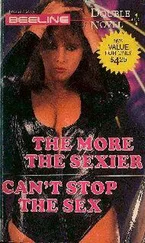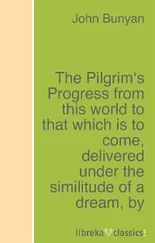The Coding War Games are well known in tech circles, but DeMarco and Lister’s findings reach beyond the world of computer programmers. A mountain of recent data on open-plan offices from many different industries corroborates the results of the games. Open-plan offices have been found to reduce productivity and impair memory. They’re associated with high staff turnover. They make people sick, hostile, unmotivated, and insecure. Open-plan workers are more likely to suffer from high blood pressure and elevated stress levels and to get the flu; they argue more with their colleagues; they worry about coworkers eavesdropping on their phone calls and spying on their computer screens. They have fewer personal and confidential conversations with colleagues. They’re often subject to loud and uncontrollable noise, which raises heart rates; releases cortisol, the body’s fight-or-flight “stress” hormone; and makes people socially distant, quick to anger, aggressive, and slow to help others.
Indeed, excessive stimulation seems to impede learning: a recent study found that people learn better after a quiet stroll through the woods than after a noisy walk down a city street. Another study, of 38,000 knowledge workers across different sectors, found that the simple act of being interrupted is one of the biggest barriers to productivity. Even multitasking, that prized feat of modern-day office warriors, turns out to be a myth. Scientists now know that the brain is incapable of paying attention to two things at the same time. What looks like multitasking is really switching back and forth between multiple tasks, which reduces productivity and increases mistakes by up to 50 percent.
Many introverts seem to know these things instinctively, and resist being herded together. Backbone Entertainment, a video game design company in Oakland, California, initially used an open office plan but found that their game developers, many of whom were introverts, were unhappy. “It was one big warehouse space, with just tables, no walls, and everyone could see each other,” recalls Mike Mika, the former creative director. “We switched over to cubicles and were worried about it—you’d think in a creative environment that people would hate that. But it turns out they prefer having nooks and crannies they can hide away in and just be away from everybody.”
Something similar happened at Reebok International when, in 2000, the company consolidated 1,250 employees in their new headquarters in Canton, Massachusetts. The managers assumed that their shoe designers would want office space with plenty of access to each other so they could brainstorm (an idea they probably picked up when they were getting their MBAs). Luckily, they consulted first with the shoe designers themselves, who told them that actually what they needed was peace and quiet so they could concentrate.
This would not have come as news to Jason Fried, cofounder of the web application company 37signals. For ten years, beginning in 2000, Fried asked hundreds of people (mostly designers, programmers, and writers) where they liked to work when they needed to get something done. He found that they went anywhere but their offices, which were too noisy and full of interruptions. That’s why, of Fried’s sixteen employees, only eight live in Chicago, where 37signals is based, and even they are not required to show up for work, even for meetings. Especially not for meetings, which Fried views as “toxic.” Fried is not anti-collaboration—37signals’ home page touts its products’ ability to make collaboration productive and pleasant. But he prefers passive forms of collaboration like e-mail, instant messaging, and online chat tools. His advice for other employers? “Cancel your next meeting,” he advises. “Don’t reschedule it. Erase it from memory.” He also suggests “No-Talk Thursdays,” one day a week in which employees aren’t allowed to speak to each other.
The people Fried interviewed were saying out loud what creative people have always known. Kafka, for example, couldn’t bear to be near even his adoring fiancée while he worked:
You once said that you would like to sit beside me while I write. Listen, in that case I could not write at all. For writing means revealing oneself to excess; that utmost of self-revelation and surrender, in which a human being, when involved with others, would feel he was losing himself, and from which, therefore, he will always shrink as long as he is in his right mind.… That is why one can never be alone enough when one writes, why there can never be enough silence around one when one writes, why even night is not night enough.
Even the considerably more cheerful Theodor Geisel (otherwise known as Dr. Seuss) spent his workdays ensconced in his private studio, the walls lined with sketches and drawings, in a bell-tower outside his La Jolla, California, house. Geisel was a much more quiet man than his jocular rhymes suggest. He rarely ventured out in public to meet his young readership, fretting that kids would expect a merry, outspoken, Cat in the Hat–like figure, and would be disappointed with his reserved personality. “In mass, [children] terrify me,” he admitted.
* * *
If personal space is vital to creativity, so is freedom from “peer pressure.” Consider the story of the legendary advertising man Alex Osborn. Today Osborn’s name rings few bells, but during the first half of the twentieth century he was the kind of larger-than-life renaissance man who mesmerized his contemporaries. Osborn was a founding partner of the advertising agency Batten, Barton, Durstine, and Osborn (BBDO), but it was as an author that he really made his mark, beginning with the day in 1938 that a magazine editor invited him to lunch and asked what his hobby was.
“Imagination,” replied Osborn.
“Mr. Osborn,” said the editor, “you must do a book on that. It’s a job that has been waiting to be done all these years. There is no subject of greater importance. You must give it the time and energy and thoroughness it deserves.”
And so Mr. Osborn did. He wrote several books during the 1940s and 1950s, in fact, each tackling a problem that had vexed him in his capacity as head of BBDO: his employees were not creative enough. They had good ideas, Osborn believed, but were loath to share them for fear of their colleagues’ judgment.
For Osborn, the solution was not to have his employees work alone, but rather to remove the threat of criticism from group work. He invented the concept of brainstorming, a process in which group members generate ideas in a nonjudgmental atmosphere. Brainstorming had four rules:
1. Don’t judge or criticize ideas.
2. Be freewheeling. The wilder the idea, the better.
3. Go for quantity. The more ideas you have, the better.
4. Build on the ideas of fellow group members.
Osborn believed passionately that groups—once freed from the shackles of social judgment—produced more and better ideas than did individuals working in solitude, and he made grand claims for his favored method. “The quantitative results of group brainstorming are beyond question,” he wrote. “One group produced 45 suggestions for a home-appliance promotion, 56 ideas for a money-raising campaign, 124 ideas on how to sell more blankets. In another case, 15 groups brainstormed one and the same problem and produced over 800 ideas.”
Osborn’s theory had great impact, and company leaders took up brainstorming with enthusiasm. To this day, it’s common for anyone who spends time in corporate America to find himself occasionally cooped up with colleagues in a room full of whiteboards, markers, and a preternaturally peppy facilitator encouraging everyone to free-associate.
There’s only one problem with Osborn’s breakthrough idea: group brainstorming doesn’t actually work. One of the first studies to demonstrate this was conducted in 1963. Marvin Dunnette, a psychology professor at the University of Minnesota, gathered forty-eight research scientists and forty-eight advertising executives, all of them male employees of Minnesota Mining and Manufacturing (otherwise known as 3M, inventors of the Post-it), and asked them to participate in both solitary and group brainstorming sessions. Dunnette was confident that the executives would benefit from the group process. He was less sure that the research scientists, whom he considered more introverted, would profit from group work.
Читать дальше
![Сьюзан Кейн Quiet [The Power of Introverts in a World That Can't Stop Talking] обложка книги](/books/33084/syuzan-kejn-quiet-the-power-of-introverts-in-a-wo-cover.webp)











